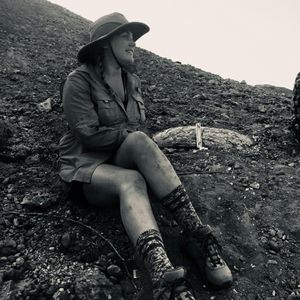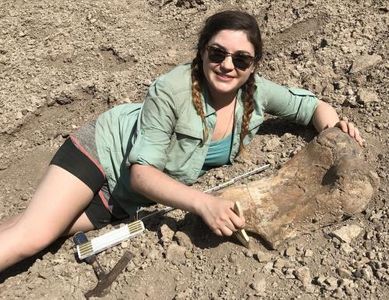Q&A with Prof. Amanda Leiss
Amanda Leiss is a paleoanthropologist broadly interested in paleoecology, taphonomy, osteology and human evolution. She is an active member of the Gona Paleoanthropological Research Project, and has been conducting research in Ethiopia since 2010. She has also piloted field and museum research with the Baringo Paleontological Research Project, in Kenya.

Q: How did you get into anthropology?
A: I have always been interested in the natural world and categorizing things. I used to dig up my backyard and collect fossils on the beach when I was a little kid. I took an archaeology class in high school. In undergrad did two internships, one in Ethiopia and one in Peru, working with both human and animal remains.
Q: What do you enjoy about teaching?
A: Through teaching bioanthropology, I’ve learned that it is really benefiting the world. If I can teach students about the evolutionary path to human variation, where they come from, and instill in them some kind of passion to teach their friends about it — then I have done wonders for the world.

Q: Tell us more about your research.
A: I have been working in Ethiopia since 2010. My research focuses on Hominid behavior, specifically the evolution of stone tool use, hunting, increases in cognitive behavior, and the transition to Homo erectus through reconstructing the paleoenvironmental context. I’m also working on an isotope project in Peru looking at the domestication of camelids. What I do helps to inform people who study health outcomes in humans today.
Q: How did you prepare for your research and fieldwork?
A: I learned Amharic, the national language of Ethiopia, in graduate school. As an undergrad, I learned a lot of basics and surface level skills — how to do archaeology, what bioanthropology is, how those two work together. In graduate school I learned how to write grants and a lot more about Great Apes. I’m really informed by a lot of what my colleagues do, which makes me ask different kinds of questions.